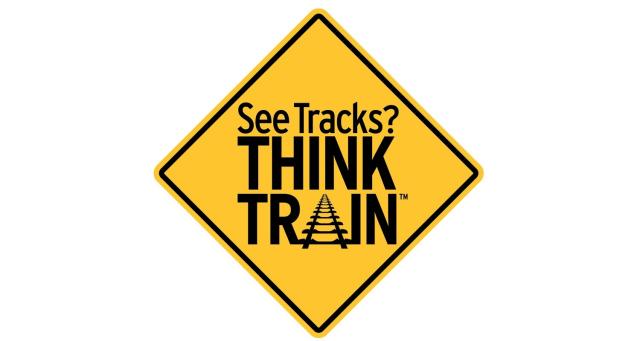By Dan Lieberman, @LiebermanTweets
September is Rail Safety Month, and both Caltrain and our partner Operation Lifesaver will mark the occasion by spreading the word on how to stay safe near train tracks. A central tenet of these efforts are what’s known as the Three E’s: Education, Enforcement and Engineering. In the name of the first of those three, I’m going to walk you through these concepts and how Caltrain is using them to make its service safe for everyone.
Education is, quite simply, the effort to inform the public about the best practices when near tracks. Prior to the founding of Operation Lifesaver, a lot of irresponsible and dangerous behaviors were commonplace and the amount of deaths caused by them were far higher than they are today. While to us it may seem like not playing around on train tracks is common sense, that hasn’t always been the case. It’s taken decades of education to deter people from these behaviors, and we continue our efforts to make sure that more people understand the danger to themselves and others caused by their actions. Caltrain has a rail safety page on its website, and has done a series of videos over the years to reach a wider audience. Also, multiple Caltrain employees are Operation Lifesaver volunteers who give rail safety presentations to interested groups (if you’re interested, sign up here). Ultimately, we believe an informed and educated public is a safe public.
Enforcement covers how we hold people to the laws designed to protect them from being injured by trains. Caltrain contracts with the San Mateo County Sheriff’s Office, which provides the agency with its Transit Police. The men and women of the Transit Police regularly pursue people trespassing on the tracks, for both their safety and the operations of the railroad. They also enforce Caltrain policies at stations, making sure people stay on the right side of the yellow line, don’t ride their bikes on the platforms, and make sure that everyone is acting in a safe and responsible manner. Caltrain and the Transit Police have done outreach events aimed at both riders and drivers near our tracks, making sure they’re aware of potentially dangerous behaviors and how to avoid them. I still distinctly remember an incident from my wayward youth where I crossed the tracks on foot as the gates were going down, only to have an officer on a motorcycle pull over and inform me that I had just broken the law. It stuck, and we hope that similar efforts make sure that more people understand the risks involved.
Finally, Engineering looks at how railroads are designed and how they can be improved to minimize the potential for injury. When tracks were first laid along our corridor in 1863, the Peninsula was unrecognizable compared to today. The dense metro area full of homes and businesses was a sparsely-populated collection of farms and ranches, predating many of the cities that are now our major stops. Unfortunately, this means that our tracks are more exposed than they are in more modern systems, leading to potentially dangerous encounters. A major challenge for Caltrain is its 42 at-grade crossings, meaning a location where a roadway crosses directly over the tracks. Thankfully, this year one of those crossings will be replaced by a grade separation, where the tracks are raised and the road lowered to separate them from one another. The 25th Avenue Grade Separation Project broke ground in 2018, to replace the at-grade crossing with a grade separation at 25th Avenue in San Mateo, while building entirely new grade separations at 28th and 31st Avenues to provide more access into the Bay Meadows neighborhood. In addition, Caltrain spent $15 million in 2019 upgrading signage, striping, crossing gates and other pieces of infrastructure designed to prevent people from crossing the tracks at the wrong time. This is the most expensive of the three E’s, but also the most effective, as people who cannot access the tracks are not in danger of being harmed by a train.
The Three E’s have proven to be an effective means of keeping people safe. Since the founding of Operation Lifesaver, train-related fatalities have fallen by two-thirds. We at Caltrain will continue to promote safer behavior by educating the public, enforcing the laws that keep us safe, and engineering our tracks to be as safe as possible.
###
